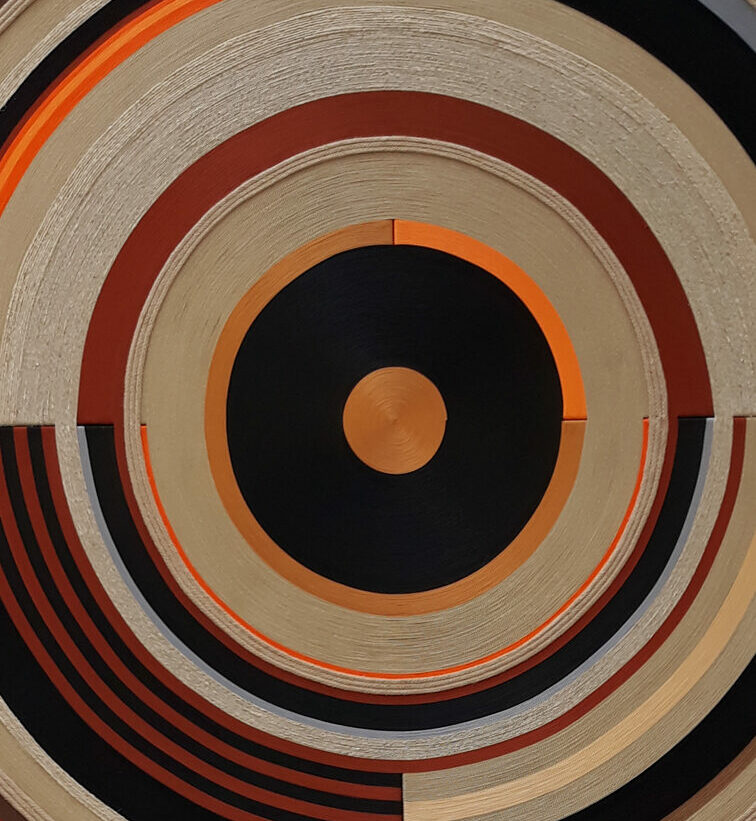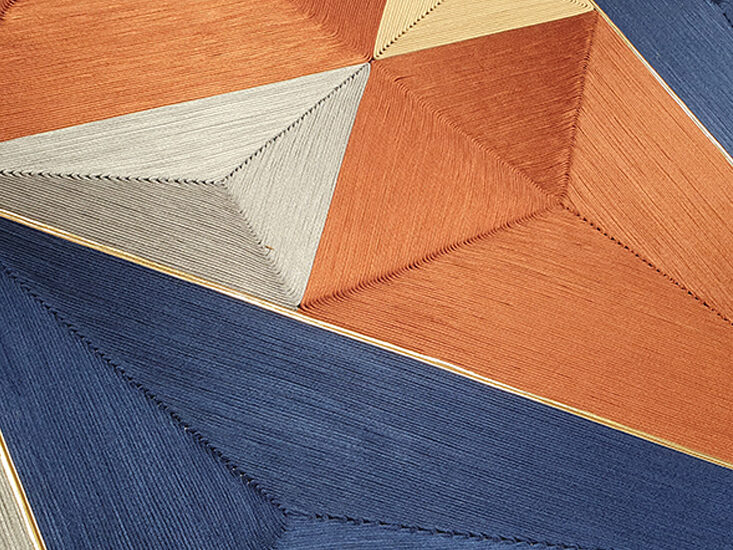Behind the scenes at Majuno

Daughter of an aristocratic farmer and Charolais cattle breeder in the Bourbonnais region near Moulins, Véronique de Soultrait probably never imagined that the ropes and strings she thoughtlessly handled on her parents' farm would one day become the foundation of her art.
Having gently but firmly shunned the destiny of a well-married young woman expected of her by her noble lineage, Véronique de Soultrait studied at the Beaux-Arts in Lyon. Initially a painter, she has long specialized in painting trompe-l'œil and copies. A passionate antique hunter, she has always scoured flea markets and collected cushions, tablecloths and other crocheted "grandma" fabrics for her own pleasure. Then she began to transform them by dyeing them, studying their shapes and techniques before imagining her own patterns.
Little by little, a new material replaced paint. The result : compositions of ripples and swirls that appeal to interior architects and designers around the world.


Why and how did you decide to work with cord ?
Once I'd learnt crocheting, it was almost natural for me to turn to cord. I taught myself how to transform it, how to coax it. It's a very rudimentary material to begin with, and I love the idea of turning the humble and the simple into something beautiful. I always aim for simplicity, without ever giving in to the easy way out. The cord I use comes from the Saint-Étienne region, well known in the world of passementerie, and very close to Lyon, where I now live. They are generally used for clothing, jewelry or laces. Seven years ago, I set up my own "cordelière" workshop, a name I invented for myself since the profession didn't really exist.
What are the particularities of your job as a cord artisan ?
What we do in the workshop is at the crossroads of embroidery, braiding and macramé, but unlike all these skills, we don't knot the ends, we glue them. In a way, I invented cord marquetry. We're now a team of five pioneers who make wall panels, folding screens, headboards and now, this table for Majuno.


What process did you go through to come up with this unique table ?
This is the first time I've created a tabletop. After a long discussion with Julie, the person behind the project, she offered me a color chart to guide my thinking. I was able to find waxed cotton cords that matched our needs without having to dye them, which I do very often. Having grown up in the countryside, my work has always been influenced by nature. India is also dear to my heart, a country I love for the flamboyance of its colors, its spirit... Little by little, I came up with this design made of very colorful, very cheerful swirls. We added gold grooves reminiscent of brass. This table could be part of the "strata" collection I imagined a few years ago. But in reality, its design and shape are unique, since I imagined them for Majuno.

